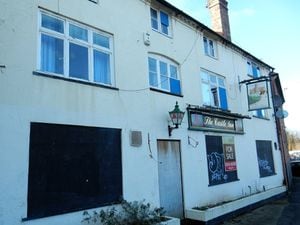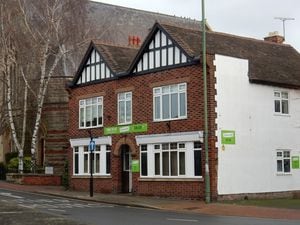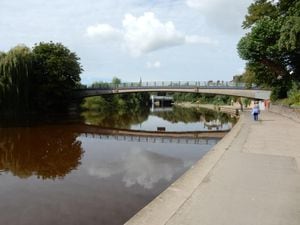Phil Gillam: Sad that Shrewsbury's back-to-front pub will be no more
Like the rainbow that follows an afternoon deluge or the ringing in your ears after attending a rock concert, there was a certain inevitability to it.

Nevertheless, that doesn’t make me any less sad when I read the words “Demolition of former public house”.
For years now there have been rumours of houses being built on the site and now it seems those stories are coming true.
Of course I’m talking about The Castle Inn - the back-to-front pub - in Old Coleham, Shrewsbury.
Derelict and unloved, the old Castle has been closed for best part of a decade now.
Why is it known as the back-to-front pub? I’m glad you asked.
Time for a quick history lesson:
You see, as you head towards Belle Vue from the English Bridge, the roads to Meole Brace and Longden (via Longden Coleham) have always separated outside the Seven Stars, but the original Meole Brace road did not flow effortlessly into Belle Vue as it does today, but instead followed the course of Old Coleham until 1826 when the turnpike trustees built a straighter line – Moreton Crescent.
About 40 small cottages lined Old Coleham in the 1830s, and there were more than 50 by the 1860s, but all have since been swept away.
Now then. The landmark that makes sense of a much-changed landscape (explains historian Barrie Trinder) is of course The Castle pub, previously the Windsor Castle and the Bull and Pump, which faces the old road; hence it is the back-to-front pub. The back of the building faces the 'modern' main road: Belle Vue Road.
The inn adjoined a mansion, once called Gibraltar, that was rebuilt and named Moreton Villa by William Hazledine, about the time that the new road was built.
The grounds of this villa occupied the whole southern end of the 'island' between the old and new roads.
The Castle Inn (the back-to-front pub) is the only remaining building that signposts all this history.
Take away the pub and there’s nothing left to tell this story.
The much-missed, late great Councillor Mansel Williams was fond of telling and re-telling this bit of history.
But very few of us get excited about these things, and I’d always thought the pub’s days were surely numbered.
Sure enough, there is to be a residential development of four houses on the site, and the work will involve the demolition of the old Castle Inn.
No doubt the new houses will be smart and clean and tidy – attractive even – and the pub has been an eye-sore for a long time, but I’m always a little sad when another bit of Shrewsbury’s history quietly disappears.
As a footnote here, I suppose it is fair to say that Britain’s pub-going habits have changed quite dramatically in recent years with people choosing to stay at home or follow other leisure pursuits instead. Hence, hundreds and hundreds of pubs like The Castle have bitten the dust the length and breadth of the country.
But I’m a great fan of pubs and I’m hoping the cull is coming to an end, and that most of those that have survived will be with us for many years to come.
Earlier this year, the Campaign for Real Ale launched a new initiative to protect 3,000 pubs from demolition or conversion to other uses – as new statistics released showed 29 pubs a week were being lost across the UK.
Camra has been mobilising its members in England to nominate their local pub as an Asset of Community Value (ACV) and offer advice and guidance to other community groups looking to do the same. Currently pubs can be demolished or converted to other uses without planning permission, whereas pubs with ACV status are given planning protection under laws introduced in April.
Let’s hope this is a success and helps to draw a line under the rush of closures.
Cheers to that!
Write to Phil at philoncloudbase@gmail.com





